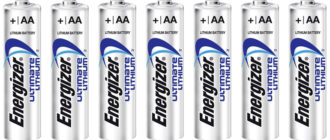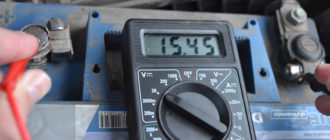Proper operation of the battery allows you to maximize its life. To maintain a high level of charge, the battery sometimes has to be charged. In such a situation, many motorists do not know what to do with battery plugs. The question is whether to unscrew them from the case during charging or not.
Content
Why it is worth unscrewing plugs when charging
The plugs should be unscrewed, primarily due to the formation of increased pressure inside the battery case. With a long supply of electric current to the terminals, the electrolyte begins to “boil”, and the formation of a large amount of gas can cause deformation of the housing.
Increased pressure can negatively affect the integrity of lead plates, especially if the old battery is being charged. A new car battery can also suffer, because inside the body explosive gases are formed that are easily ignited by a spark.
If the battery explodes, the electrolyte will scatter in different directions, which can lead to chemical burns to the skin, eyes or fire. The caustic substance can also damage almost any item made not of plastic, rubber or glass.
Note! To avoid an explosion, it is better to always unscrew the plugs, the current of the battery should be in a well-ventilated area, so that gases are not collected. In addition to the fact that they are easily flammable, they are also poisonous.
Do you always need to unscrew the plugs
If there is a possibility of dust, water, engine oil or fuel getting inside the cans, it is better not to remove the plugs. If it is necessary to charge the battery in a room where sparking of electric wires is possible or work with open fire is planned, it is better to leave the battery case sealed.
If the battery must be recharged within 20 to 30 minutes with a current of standard force, then in this case you can not unscrew the plugs, because the dangerous pressure simply does not have time to form inside the case.
If a maintenance-free battery has been independently converted to a maintenance one, then in many cases you can leave plugs in the battery case. Such batteries are made using calcium technology and in order to achieve strong gas formation it will take too long to supply electric current to the battery terminals.
Important! All accumulators are equipped with special gas vents, through which the gas must be discharged at high pressure in the housing, so if the valves are clean of dirt, then the covers can not be twisted.
How to unscrew plugs
If the plugs rise above the surface of the battery cover and have a tetrahedral surface, they can easily be removed using a suitable wrench.
It is much more difficult to cope with those that are recessed in the case. As a rule, they have a cruciform recess on the surface. Using a wide slotted screwdriver, you can easily unscrew them. You can use a chisel or knife, but care must be taken not to cut your hands or drop the garbage in a jar.
It is not recommended to use chisels and a hammer to remove tightly twisted plugs. Of course, with the help of these tools it is possible to remove the plugs, but they will be badly damaged. Their further use after this method of dismantling remains a big question.
Output! Relatively speaking, if the plugs are unscrewed, it is better to unscrew, and if not, then you need to necessarily clean the exhaust ducts.
Precautionary measures
Unscrew the plugs only when the charger is turned off. If this is done during charging, too much hot gas can escape through the holes, which can ignite from the slightest spark.
For the same reason, it is forbidden to smoke during this operation. Before opening the battery case, you should also make sure that there is no open flame near the battery, as well as spiral-type heating devices or incandescent lamps.
Unscrewing plugs should be carried out with gloves and goggles. It is almost impossible to determine the gas pressure inside the housing in advance, therefore, after removing these elements, the gas can escape outside, entraining the smallest drops of caustic substance.
It is important to carry out this operation in a well-ventilated area. A fairly large amount of toxic gas accumulates inside the battery, which can lead to serious poisoning.







